
Moving away from the rocky planets of the inner solar system the first planet in this region is the king of the planets – Jupiter. This is especially fitting as Juno has just entered orbit of Jupiter at the start of it’s mission to find out more about this giant. Veiled in colourful clouds of hydrogen and Helium it is the largest and the most vivid of all the gas giants. With 67 known moons in stable orbits, Jupiter has the largest amount of moons of any planet in the solar system and with rings only discovered in the 1970’s too there is so much to Jupiter that it will be impossible to cover it all in this piece.
Facts about Jupiter
Moons
Because there are so many moons hurtling around Jupiter, covering them all is better served by looking at this link on Wikipedia on Jupiter’s moons:
There are the four major Galilean moons, discovered by Galileo (hence the names). These are the four largest moons that are visible with an ordinary pair of binoculars or a small telescope. Despite their similar locations, these worlds could not be more different.
IO

IO is the most volcanic worlds in the solar system. IO’s surface is a barren sulfur rich surface, spewed from more than 400 volcanoes all over the moon. The are generated from the kneading effect Jupiter’s gravity has on the small world.
Europa
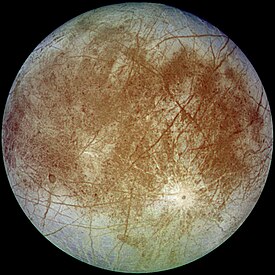
Europa, which is about the size of our moon has the smoothest surface of any known object in the solar system. It’s makeup is thought to be made of Nickel and Iron, but it’s the frozen water surface that has intrigued scientists for years. The frozen surface it expected to hide a sub surface ocean which could harbour life.
It’s surface is almost crater less, implying that it’s surface is frequently changing and re-freezing in order to keep it’s smooth nature. The surface is criss-crossed with giant ice cracks .
Ganymede

Ganymede is the largest of Jupiter’s moons and is the only moon to have a magnetosphere. It has a roughly equal silicate rock / water ice makeup. It’s larger than Mercury, but with less mass. The origins of the lighter regions seen on Ganymede are unknown, but are suspected to be the result of tectonic activity.
Callisto

Calliso is a moon made mostly of rock and ice, with little evidence of geologic activity on it’s thought it’s surface has been made completely from impacts of other objects. Callisto is the third largest moon in the solar system and Jupiter’s second largest moon.
Inspiration:
Holst’s musical inspiration for Jupiter, is big, loud, bold and Jovial. Exactly fitting for the king of our planets.
Recent Events
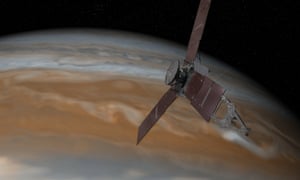
Yesterday on the 4th of July 2016 Juno arrived at Jupiter and entered obit around the planet. It’s going to be taking measurements to find out more about what the planet is made of, this is going to give us clue to how the planet was formed. Currently several theories present about the planets format, data from Juno should help us pick one, or come up with another theory.
Juno – What do we hope to learn?
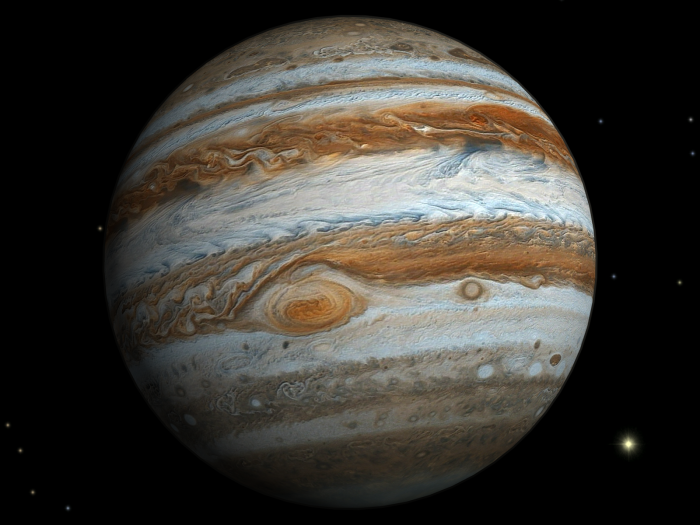
Jupiter has been visited a number of times with unmanned probes, the pioneer missions being the first, with Voyagers 1 and 2 following after and giving us far more data about the planet and it’s moos, also discovering the Jupiter is a planet with rings.
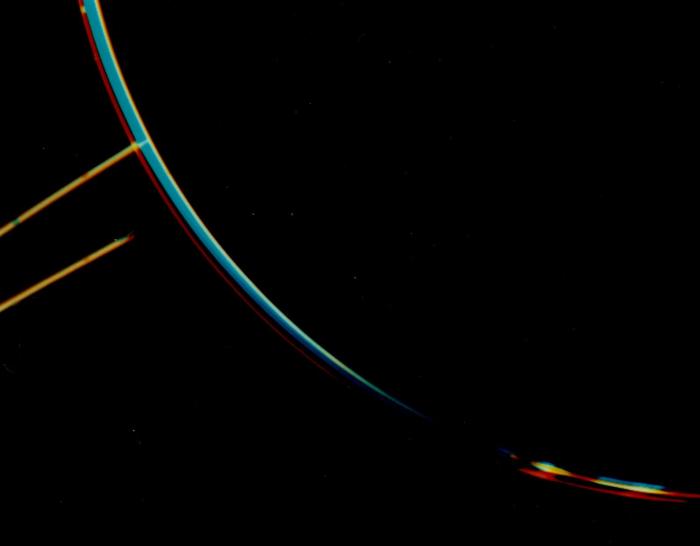
Since then, Cassini has flown past on the way to Saturn New Horizons also paid Jupiter a fleeting visit on it’s way to Pluto. The only mission to orbit Jupiter is the Galileo, which orbited Jupiter for seven years and gathers data on it’s atmosphere and moons before being deliberately aimed into the Jovian atmosphere, gathering a wealth of data before being crushed and vaporised by the intense pressure and heat.

Hubble has also bee able to gather data on Jupiter, these images showing the amazing detail Hubble can bring us of the planets by itself.
Keep an eye out for Jupiter on Juno – also they’re opening much of Juno’s camera to the public, enabling them to take and colour correct the pictures that they capture. This means space exploration is getting interactive and Jupiter is going to be more interesting.

Also find Planet Simon on Twitter
Come and visit find me on my Planet Simon Facebook Page
Find some of my pictures on Instagram
Also look me up on: Pinterest Stumbledupon Wattpad

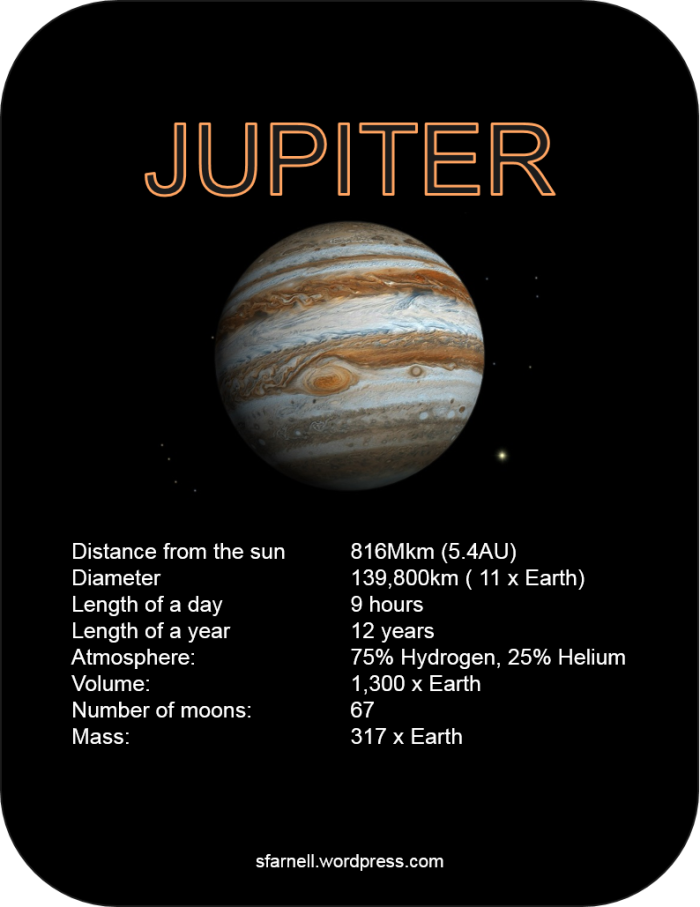
Almost two years later of its original publish, I read this post. Had looked around so much for your blog, Simon, but WP didn’t seem to like the idea of me searching you, it seems. Yet I found it, again. (Your last post that I read was about taking backup of WP blog.)
This universe is so vast, and it will take us humans centuries to unveil even one-fourth of its secrets. Your posts, especially the astronomical ones, always amaze me.
LikeLiked by 1 person
Hmm… I don’t like the idea of bloggies not bring able to find my blog. But I’m pleased you did.
Three vastness of the universe is something that human mind cannot grasp on its entirety. 😀
LikeLike
When a child, you would look up at the stars and think, ‘I want to be an astronaut and go to space.’
But you no longer need to do that. You just need to read this post. 🙂
LikeLiked by 2 people
That’s such a compliment. Thank you so much and for the follow 😊
LikeLike
Jupiter and its moons are gorgeous. ❤ 🙂 Thanks for sharing!
LikeLiked by 1 person
They’re very majestic, in a showy kind of a way! 😃
LikeLiked by 1 person
🙂 The peacock of planets?
LikeLiked by 1 person
Perhaps, not a bad analogy
LikeLike
Great post Simon. Certainly the Go-To Guide for the Jovian system.
I wonder what the solid surface of Jupiter is like? Now there’s a challenge and a half.
LikeLiked by 1 person
They reckon it’s liquid hydrogen, which then turns into metallic hydrogen. What that looks like I have no idea!
LikeLiked by 1 person
Yeh, I heard that too. I’d just love to see metallic hydrogen….guess will just have to keep on imagining.
We have an amazing Solar System.
LikeLiked by 1 person
I think if we saw it it wouldn’t be for long as we would either be crushed or it would explode viciously.
LikeLiked by 1 person
True, Reality always has to have its say doesn’t it?
LikeLiked by 1 person
Yes, as does physics lol
LikeLiked by 1 person
And if there are little red men, wait That’s Mars ….
~B
LikeLiked by 1 person
Except they can’t find them!
LikeLiked by 1 person
On Jupiter, I’d only be 4.58 years old. When do we leave,
LikeLiked by 2 people
We should have tagged a ride with Juno lol
LikeLiked by 2 people
Really looking forward to seeing photos from Juno!
LikeLiked by 1 person
Apparently the camera is open to the public to take pictures.
LikeLiked by 2 people
Wow. Thanks Simon, it will be interesting what we receive and it won’t be long.
LikeLiked by 1 person
No, it should be pretty quick!
LikeLiked by 1 person
Fabulous and mind boggling post!
LikeLiked by 1 person
Thanks Lucy!!! 😃😃😃
LikeLiked by 1 person